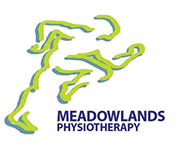Physiotherapy for Soccer Injuries
Soccer is an intense sport and with that, it has the potential to cause injuries. It’s not just about impact with the ball or other players, but also about overusing muscles, overstraining tendons, and moving with less-than-ideal technique whether you’re decelerating, jumping, pivoting, or running. Physiotherapists have an important role to play to help you to both avoid these injuries, and recover from them. If you have an injury or if you’re concerned that you may develop one, then it’s worthwhile to reach out to a physiotherapist to see how they can help you to stay healthy and perform your best.
Preventing Soccer Injuries
The intense stop-and-go pace of soccer is exhilarating, but can also cause athletes to push their bodies beyond safe limits or use poor techniques that make them more liable to injury. Physiotherapists can show you how to prevent these injuries using new techniques, stretches, and strength building exercises. Learning how to move safely can also make you a more effective player, benefiting not only your health but your game as well.
Common Soccer Injuries in Adults
Soccer has the potential to cause a wide variety of strains and sprains. However, these five injuries are the most common, and a physiotherapist is trained to help you with prevention and recovery:
- Hamstring strain: The hamstring is a collection of muscles on the back of the thigh. It undergoes stress during the movements associated with soccer and can become strained.
- Lateral ankle sprain: A lateral ankle sprain is when the foot lands poorly so that it rolls under the body, which in turn stretches the ankle, sometimes to the point of injury.
- Knee meniscus: Like the lateral ankle sprain, this knee injury also involves improper landing. When the knee twists or turns unnaturally it can tear the cartilage within, called the meniscus.
- Hernia: A hernia is where an organ tears through a muscle or fascia. When caused in sports, they are due to intense pressure. Typically, soccer players suffer hernias in the inguinal canal and the lower abdominals.
- Anterior cruciate ligament: The ACL might be the most well-known soccer injury, and one that soccer players should especially focus on preventing as recovery takes a long time and complete recovery is not always possible. This injury is caused by sudden changes of direction, a staple of an agile soccer player. The lower part and upper parts of the leg act out of sync, tearing the ligament that keeps them together.
While you’ll notice that these are all injuries to the lower body, upper body injuries such as those to the shoulder and hand are also possible in soccer. Goaltenders suffer the bulk of these injuries. Physiotherapists have the knowledge and skills to help you treat and recover from them, just as with the other injuries on this list.
Common Soccer Injuries in Youth
Some injuries are more likely to affect youth as they are undergoing growth spurts and may not have the technique to prevent their own injuries. The most common soccer injuries in youth are Osgood’s Schlatter’s disease and Sever’s disease. They result in pain below the knee and pain in the heel respectively. They are overuse injuries caused by repetitive trauma to muscles and tendons that a physiotherapist can help to prevent and treat.
Are you a soccer player with an injury, or who is interested in preventing future injuries? Reach out to the experienced physiotherapists at Meadowlands Physiotherapy to discuss how we can help, and start building your unique treatment plan.

